Black Christ of Portobelo

THE BLACK CHRIST OF PORTOBELO
As you know, Peregrina
completed her circumnavigation in May, 2015 in Panama. We returned to the same anchorage in the San
Blas Islands that we first visited in 2010, and the champagne corks popped in
celebration.


In June, Peter and I left Peregrina in a slip at the Linton Bay Marina for some well
deserved rest. We returned to the States
for four months to replenish the “sailing kitty” and to decide what to do when
we grow up!
We’ve now come back to Panama and are having fun exploring areas that we missed - or past too quickly through - at the beginning of this adventure. We will hang out here until January of 2016 when we plan to transit the Canal again and head up the west coast of Central America towards the Sea of Cortez in Mexico.
So much for the “growing up” part…
One site we were determined to see again was the little Catholic Church, Iglesia de San Felipe, in Portobelo - known more commonly as the Black Christ Church.
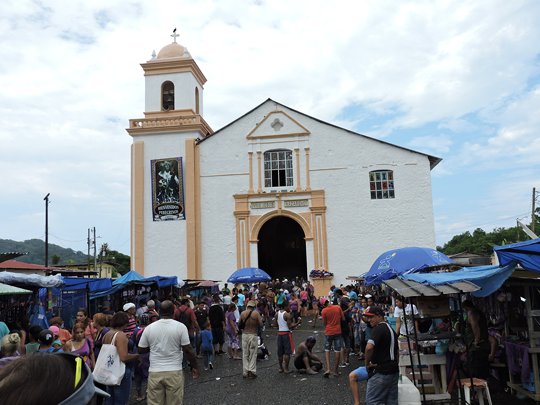
Since Peregrina means “pilgrim” in Spanish and a huge sign inside the
church announces “Bienvenidos Peregrinos”
(Welcome Pilgrims) we knew back in February of 2010 that, one day, we might
like to come back to this little town to pay our respects to the Black
Christ. After all, we can’t help thinking
that He might have been keeping an eye on us while we ventured off on a
miraculous 5 ½ year journey around the world!
The least we could do was say, “Muchas Gracias!”
The Black Christ statue is a life-sized, hauntingly sorrowful, hypnotically beautiful effigy of the “Nazareno de Portobelo” which is how the local residents refer to their statue of Jesus of Nazareth. Most others call it simply, “El Cristo Negro.” I will use the term Black Christ in this post.


The effigy, depicting Christ carrying the cross,
normally resides on display to the left of the altar. It is brought to the
center of the church on October 21 each year for the Fiesta de Cristo Negro de Portobelo, the Black Christ Festival,
Portobelo’s biggest religious/secular event of the year. I note the secular distinction because the
week-long festivities have a bit of a carnival atmosphere with plenty of
eating, drinking and partying going down, ostensibly to celebrate the life of
Christ, leading up to the solemn service on October 21 when the reveling slows
for a few hours of devotion.
A little history first…
Nobody knows exactly how or when the Black Christ arrived in the tiny community of Portobelo on Panama’s Caribbean coast - just 20 miles west of the entrance to the Panama Canal.

Reliable sources put the date at around
1658. The
most common explanation claims that a Spanish ship, carrying the heavy statue
in a wooden crate, met a terrible storm just outside the harbor in Portobelo.
In an attempt to appease the gods, save the ship from destruction and save the
seaman from certain death, the crew jettisoned the Black Christ overboard. It washed ashore and local fishermen
installed it in the Iglesia de San Felipe.
Ever since then “miracles” have been associated with
the Black Christ, now
considered Panama's most revered religious figure.
One
of the earliest stories recalls a plague on the coast that was devastating the
population around the same time the statue washed ashore. The people of
Portobelo began to pray to the figure of the Black Christ and, miraculously,
the plague avoided the village but continued on to other areas of Panama.
As word about the powers of the Black Christ spread, people started flocking to Portobelo to fall before the statue asking for miracles or expressing repentance for their sins. Throughout the year, they come from across Panama, Central and North America, Europe and beyond. But, nothing prepared us for the swell of humanity that arrived on October 21, when we brought Peregrina into the anchorage not far from the church.
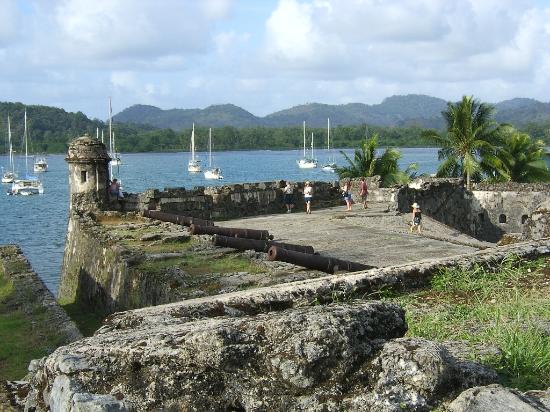
This celebration is a cross between a fervent religious holiday with purple-robed priests and pilgrims praying devoutly inside the church and a carnival atmosphere outside where hawkers by the hundreds sell religious icons, cotton candy, cheap Chinese-made toys for the kids and beer...LOTS and LOTS of beer.
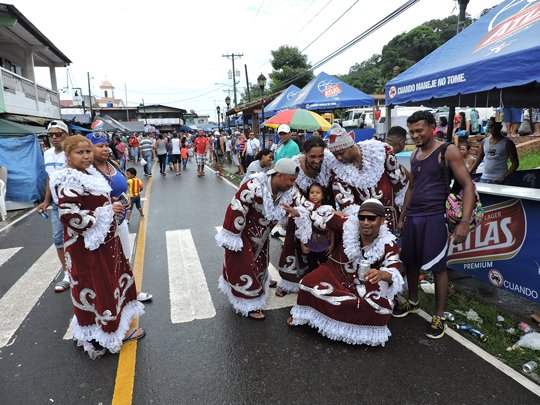
A sign on the front of the church notes the word “Cholo” which we had to look up in the dictionary.

Cholo is a loosely defined ethnic designation relating to indigenous people of racially-mixed origin. In Panama, a Cholo is an ethnic Hispanic who, in many cases, has some Spanish blood mixed with African or Caribbean origin.
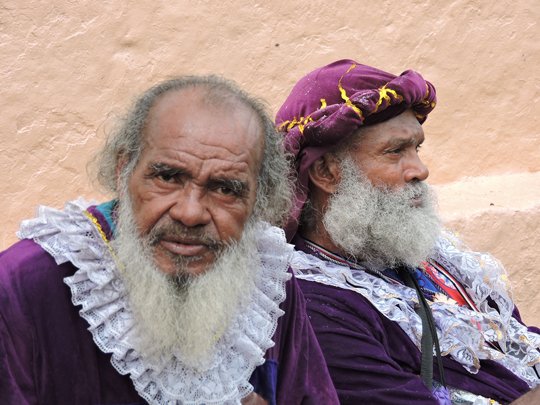
We were told that this sign is an important acknowledgement of the Cholos in Panama and the significance given to a black image of Christ. "It's important that we see our own image in that of the Divine, said one onlooker. But, this is not an event exclusively for those of black ancestry. People of all races and religions attend. It is a phenomenal spectacle of indigenous Panamanian culture and, one writer wisely suggested that the festivities deserved to be counted as a UNESCO World Heritage Cultural Event.
Portobelo has
only a couple small hotels and, with an influx of up to 50,000 people at the
height of the celebration, accommodations are few and far between. Most come for just a day-visit but the town
becomes a tent city for others. The morning finds many asleep in the Plaza
Mayor or along the side of the road. No
cars are allowed in/out of Portobelo on October 21 and, like the Haj to Mecca
for the followers of Islam, Christian pilgrims consider it the ultimate
_expression_ of devotion or atonement to walk their way humbly to the home of the
Black Christ.
Some chose to walk 53 miles from Panama City to Portobelo which takes three or four days. Many walk 22 miles from the town of Sabinitas. To show contrition, some carry wooden crosses on their backs and some even crawl the last mile on hands and knees. From all walks of life; the rich, the poor, the sick and troubled all pray before the ornately decorated robed statue of the Black Christ in hopes of positive change in their lives.


This man and his son had beautiful robes made by his wife. They two of them walked the last mile together.
Ironically,
there is a fairly significant number of bad-assed, heavily tattooed, down-right
scary “outlaws” and former prisoners,
many crawling on their hands knees for that last mile, attending the
festivities each year – all intent on asking forgiveness for their sins.
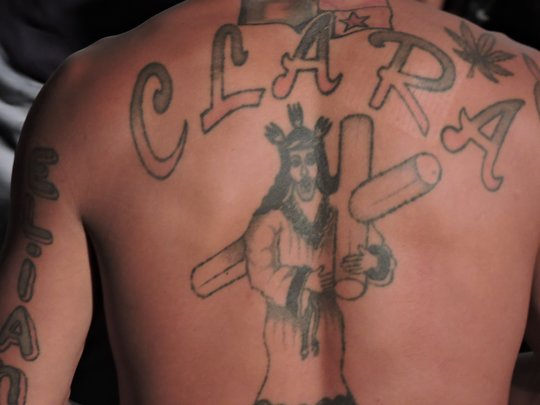
At first, their appearance on the road feels a bit out of place but, we were incredibly touched by the efforts of these men and women – many accompanied by their family members – as they reached the agonizingly painful last few yards before entering the church and prostrated themselves in front of the statue they consider the Patron Saint of criminals.
This man had one
leg yet completed the last mile crawling in penance for his sins.
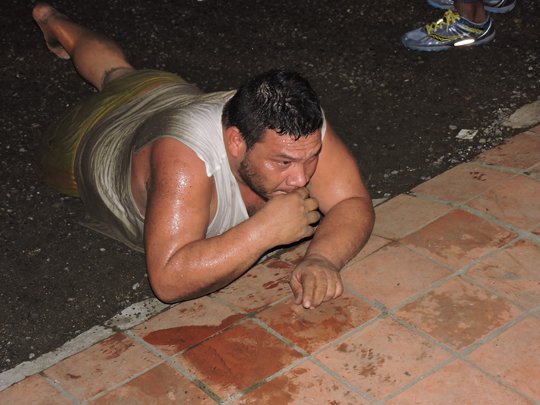
Many were
bloodied, some covered with burning wax dripped on their backs as a further
penance, all at the point of exhaustion.
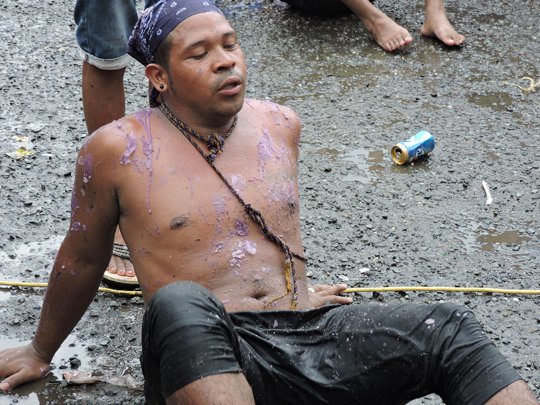
Along-side of
them, children were shouting, “Andale
Papi! Puedes Hacerlo!” (Come on Daddy!
You can make it!) and wives had
tears streaming down their faces.
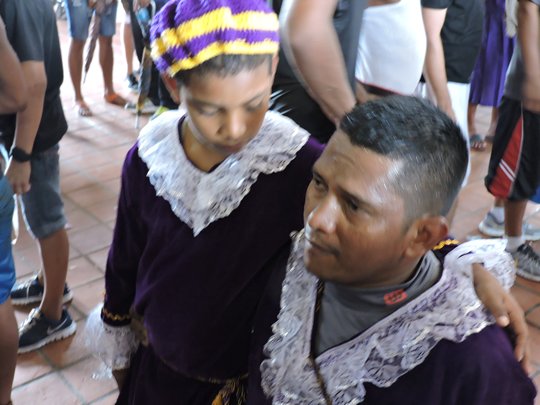
It was a lesson
in humility, tolerance and forgiveness for us and I am so grateful we had the
opportunity to witness these testimonies of faith.
At 6pm, Mass is held in the church but you must arrive before 4pm to get a seat or even standing room. Precisely 8pm, 80 men surround the statue and take turns carrying the Black Christ throughout the village in bare feet.

The bearers take three steps forward, two back, in a similar manner to that of Spanish religious processions. But, this procession has a special Latin beat with a quick step to less somber music than a typical funeral dirge. The crush of people following the statue’s march through town was claustrophobic and a bit overwhelming. Peter and I were clearly in the minority as “turistas/yachtistas” but we were welcomed with open arms and people were delighted to answer our questions and share their candles and little religious trinkets with us.
At
exactly midnight, the Black Christ is returned to the church and the service is
over. Peter and I
were long gone back to Peregrina by
that time but we could hear the sounds of the revellers – now back in party
mode – until the wee hours of the morning.
What an amazing day!
--
--
--